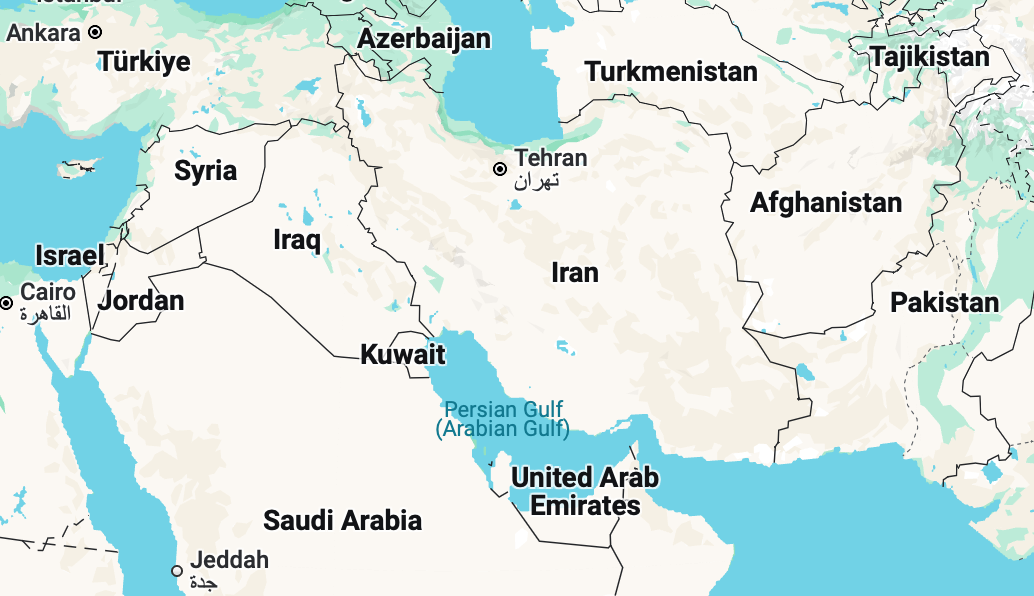By Steve Egbo
The Israeli attack on Iran, which took place June 13, and the reactions trailing it have dominated the headlines all over the world, and with new developments emerging almost on a daily basis. The world woke up barely ten days later to the news that the US has finally deployed its ultimate weapon, the GBU 57 bunker bursting bomb, against Iran’s most secure nuclear facility in the village of Fordo, near the Shia holy city of Qom. Two other nuclear sites were also hit.
President Trump, announcing the attack, praised the US military for its power of precision, speed and skill. In a visibly triumphal mood, he bellowed, “no military could do what we did tonight”. The Prime Minister of Israel, Benjamin Netanyahu, praised Mr Trump, for the “bold decision”, saying the attack will “change the course of history”. He expressed the appreciation of the Israeli nation to the American president.
Out there, opinions vary on the Israeli-Iranian conflict. Some speak out of genuine ideological understanding. Some take sides based purely on religious sentiments, while some base their stand on the measured temperature of the international system.
Yet, others remain completely ignorant of what had been happening, why they are happening and when they started to happen. Such people, mostly those who depend on social media and bloggers for information, hardly understood the dynamics at play. And for them, it has become an interplay of prevarications and polemics occasioned by disproportionate emotional directions.
The Arab-Israel conflict is one of the oldest conflicts facing humanity. Arabs and Jews have fought relentless battles and shed enormous amount of blood. However, a lot of changes has taken place in recent times, coalescing a new beginning for these old enemies. Many Arab countries have found reasons to embrace peace and accommodation with Israel. In a previous article, this writer took time to explain how Iran, a non-Arab country, completely bought over this conflict while the previously belligerent Arab neighbors opted for greater friendly relations.
This writer laid squarely on the shoulders of Iran the persistent lack of peace in the Middle East and also stated that for genuine peace to return to that region, Iran’s aggressive behavior must be put in check. To do this, Iran’s ability to create chaos must be permanently removed. The strike on Iran by the United States’ airforce, coming barely 10 days after Israel commenced hostilities, must be viewed as the build up to that much anticipated climax of events which will usher in major shifts in the fortunes of the Middle East and the rest of the world.
When Donald Trump abruptly left the G7 meeting on June 17 to return back to the White House, keen observers knew that something fundamental was cooking. This attack would have come five days earlier but for the inability of the president’s inner circle to reach a consensus. As the Commander in Chief, president Trump had made up his mind on the best course of action, but felt he had to play along with those on the other side to bring them over. It was also important to keep Iran and the rest of the world guessing and uncertain.
While this waiting game was playing out, a delicate plot was being intricately woven on how to carry out one of the most sophisticated and ambitious military operations in history. Iran is a stubborn, aggressive and suicidal enemy, so it has to be tackled with precision, accuracy and overwhelming strength. The trap had sprung, catching it’s prey in a vice-like grip. Operation “Midnight Hammer” has been executed and the world, not just Iran, not just the Middle East, is reeling.
Listening to the Defense Secretary, Pete Hegseth and the Chairman of the Joint Chiefs, Dan Caine, reel out a step by step account of this operation, one cannot help but marvel at the strength and awesomeness of America’s military machine. In the words of General Dan Caine, a man not given to theatrics, “no other military could have done this”. President Trump spoke in the same vein when he addressed the world shortly after the operation. He went further to warn Iran of “very severe consequences” should they attack any American interest or personnel anywhere in the world.
At this juncture, it is necessary to look at the larger picture. The question on every lip is – What next? What will Iran do next? What are the options for Iran and for the rest of the world? As usual, Iranian officials have been churning out verbal missiles and violent rhetorics, threatening Israel and the US with vengeance and counter measures and harsh punishment.
How much of this is real, and how much is just their usual bombast, will be seen in the coming days. The Iranian Foreign Minister traveled to Moscow to see Putin the day after the attack, but there was absolutely no need for such journey. It was just to create the impression that something is going on whereas there’s nothing going on. These are mere photo optics. He will come back with nothing. In these days of high-tech diplomacy, you don’t even need to travel thousands of miles to confer with foreign leaders.
What is certain is that Iran’s most ambitious nuclear plant at Fordo was hit and severely damaged. Two other facilities at Esfahan and Natanz were also hit and critically damaged. Hundreds of billions of dollars have been sunk on Iran’s nuclear program over the past 20 years. Iranian citizens have had to cope with many deprivations in order for the theocratic regime to build up its formidable war machine. The military, the Revolutionary Guard and the nuclear project are Iran’s points of glory.. By the early hours of June 22, 2023, all three lay in ruins.
What is not certain yet is the extent of the damage inflicted on these sites. Are they fundamental enough to scuttle Iran’s nuclear ambitions completely or are they redeemable setbacks that could be rendered functional within a number of years. Here it gets a little dicey. Iran claimed to have removed sensitive and centrifugal nuclear materials days and hours before the bombs came.
This is a possibility. Satellite images obtained at Fordo confirm movements of some trucks around the entrance to these facilities few days before the strikes. This possibility again opens another possibility. That second possibility is that highly enriched uranium of up to 20% to 60% may have been moved to undisclosed locations.
But this probability must remain in the arena of conjecture until something breaks. Further questions though: Is Iran efficient enough to ferry out its nuclear pinstripes at such critical moment and right under the noses of Israeli agents and bombers.
If Israel has the capacity to take out Iranian military and intelligence figures right inside their bedrooms and offices and bunker hide-outs, would it be impossible to detect and eliminate heavy duty trucks sneaking away from nuclear facilities which are under constant Israeli watch. Eventually, the truth will be unraveled.
But if the scenario that Iran smuggled out some nuclear equipments before the arrival of those bombs is actually feasible, it changes a lot of dynamics. What it means is that those elements are now outside IAEA supervision and observation. The Iranian regime right now is cornered. There are no supply of missiles and the ones on ground are already depleted. What’s more?
No one is rushing in with military assistance. It’s proxies, the so-called “Axis of Resistance”, are frustrated and in shambles. Infact they are very angry with Iran right now. The regime is desperate, obstinate, recalcitrant, proud and unyielding, and at that level of paranoia, may decide to do something insanely drastic. One of the options available to it may not preclude rushing through a dirty bomb, just to make a statement and create more chaos.
To further deal with the question, what next? there are three other options open to Iran. One is to fire more missiles into Israel, which, they are doing already, though in decreasing volumes. It must be pointed out equally that Iran’s missiles launch into Israel, the morning after the American attack, was of heightened ferocity. Many sites and buildings were struck across central and northern Israel, causing heavy destruction of houses and dozens of injuries.
The second option is to attack American bases in the region – Qatar, UAE, Bahrain, Kuwait, Iraq, Saudi Arabia, Jordan, Syria, etc,.. It is also possible for Iran to attack American embassies and diplomatic Missions within their reach. United States officials including president Trump, Secretary of Defense, Hegseth, Chairman of the Joint Chiefs, Caine, and US Permanent Representative at the UN, have made clear that any attack by Iran on American interests in the Middle East or anywhere in the world, will attract very heavy retaliation. Whether this threat will deter Iran at this point remains to be seen.
The third option is to create obstructions on the Straits of Hormuz and disrupt free flow of commercial traffic. Hormuz is a vital waterway that connects the Persian Gulf to the Gulf of Oman through to the Arabian Sea. Surrounded by Iran, Oman, and the UAE, the narrow strip of water is a vital route for international commerce and trade with ships carrying varieties of goods and energy supplies across many countries of the world. A disruption of the smooth operation of the strait could cause a spike in global oil prices plus other economic emergencies.
But wait. There is still another option. Iran may just decide to do nothing. Who knows?
To ease the tension created by this attack, a flurry of diplomatic activities remain ungoing. On the evening of the attack, the United Nations Security Council convened in an emergency session in New York at the instance of Iran. Russia, China and Pakistan condemned the attack and circulated a draft resolution denouncing the US attack on Iran’s nuclear facilities and calling for an immediate and unconditional ceasefire.
The Secretary General called for “restraint and dialogue” while UK and France called for de-escalation but reiterated their opposition to a nuclear Iran. They did not come out to condemn the US action. The Iranian Ambassador spoke for 14 minutes, the Israeli Ambassador spoke for 7 minutes while the US Ambassador spoke for 2 minutes.
Meanwhile, Israel is continuing its intensive bombing across numbered targets all over Iran, and with Iranian air defenses seriously dislocated, the IDF remain in full command of the Iranian airspace. The IDF is concentrating on Iranian missile launchers to ensure that the ability to fire missiles into Israeli territory is completely degraded. American bombers have returned to their bases. The journey to Iran and back took 38 hours while the operation lasted only 25 minutes. A total number of 125 airplanes took part in the operation, each manned by two crew members.
Operation “Midnight Hammer” is described as the United State’s most active bombing campaign since after 9/11. It is an ambitious military undertaking such as the world have not seen before. And when the dust is settled, that volatile region, the region that gave the world its two greatest religions, will not be the same again.



